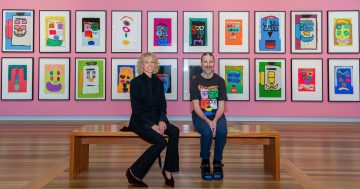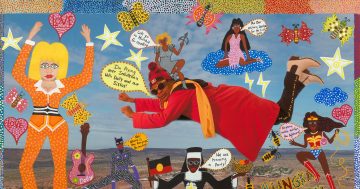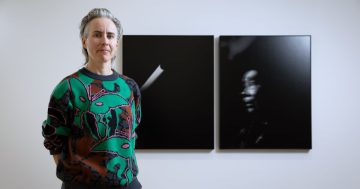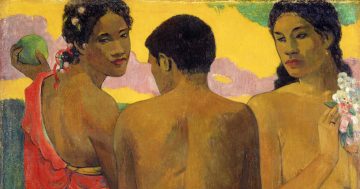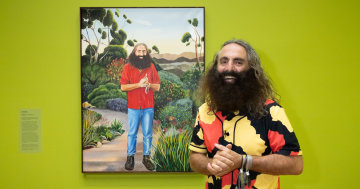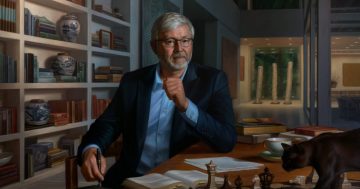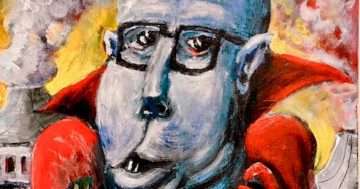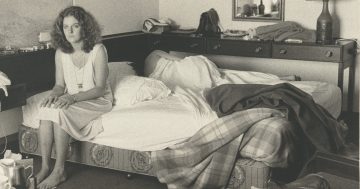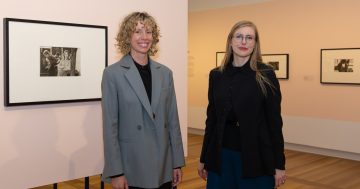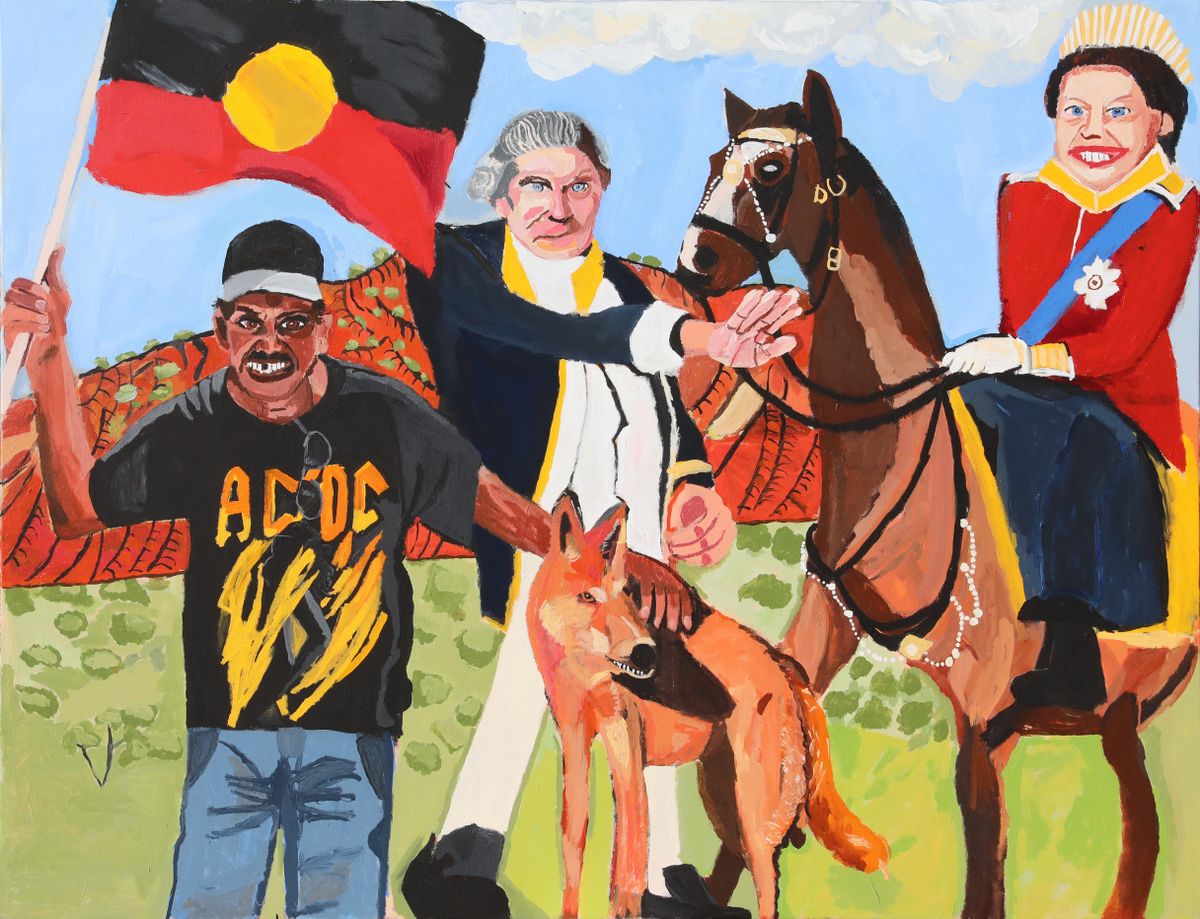
Vincent Namatjira, Western Aranda people, Displaced, 2021 – web version. Image: Supplied.
Albert Namatjira, Vincent Namatjira’s great-grandfather, was lionised in the 1940s and 1950s as a ‘blackfella’ who could paint as well as a ‘whitefella’ while employing the Western tradition of watercolour landscape painting.
Subsequently, it’s been revealed that he was painting his own country and imbued it with values not found in European art.
Vincent Namatjira is being lionised as an Indigenous artist who is determined to set the score straight and write his people back into the history of colonial Australia and the history of Australia of more recent times.
Much of his art deals with race relations and parachuting himself into various possible and impossible situations, such as rubbing shoulders with Captain Cook, the late Queen Elizabeth II and her consort, and Ned Kelly, as well as meeting with Adam Goodes, Cathy Freeman, Archie Roach, Slim Dusty and Vincent Lingiari. The artist asserts the role that First Nations people have played in Australian history, sport, music, and even the military.
The stylistic language that Vincent Namatjira employs is reminiscent of the early work of Sidney Nolan and the social realist style of Ben Shahn. Vincent Namatjira is a portrait painter with simplified forms that employ bright colours set against stark backgrounds or simple colour backdrops.
They are deliberately awkward, stylised figures, generally shown frontally with exaggerated large eyes and pronounced expressions. Frequently, name captions are included to avoid any possibility of ambiguity.
His portraits remind me of folk icons or folk portraits, where the face is devoid of any uncertainty, and we know that this is meant to be an image of St George or Ned Kelly because there is some recognisability in the face that is confirmed by the inscription.
Some of the figures are also recognisable through their ‘attribute’. For example, the dude who appears throughout the exhibition in an AC/DC T-shirt is a self-portrait of the artist.
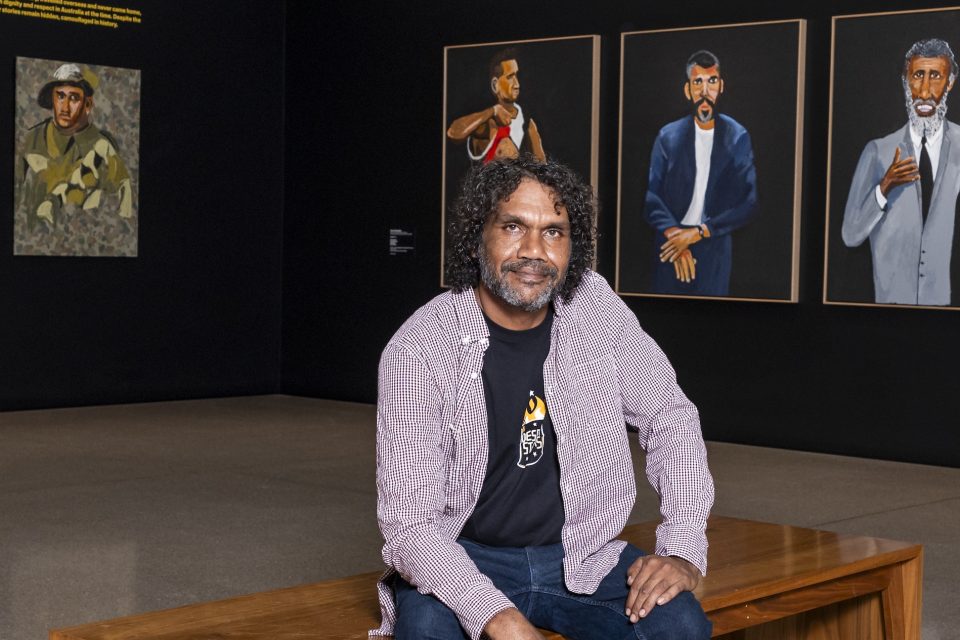
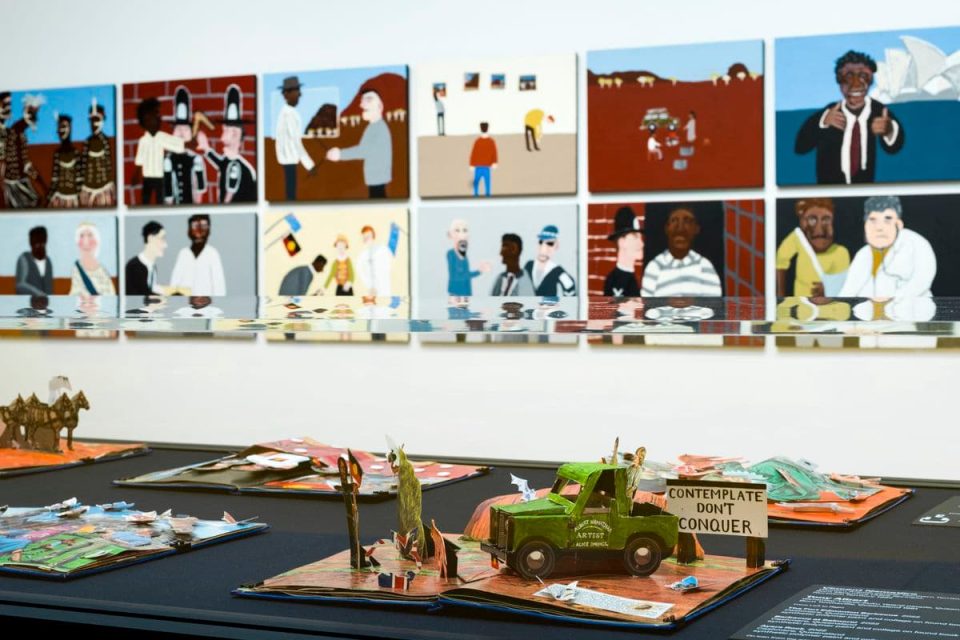
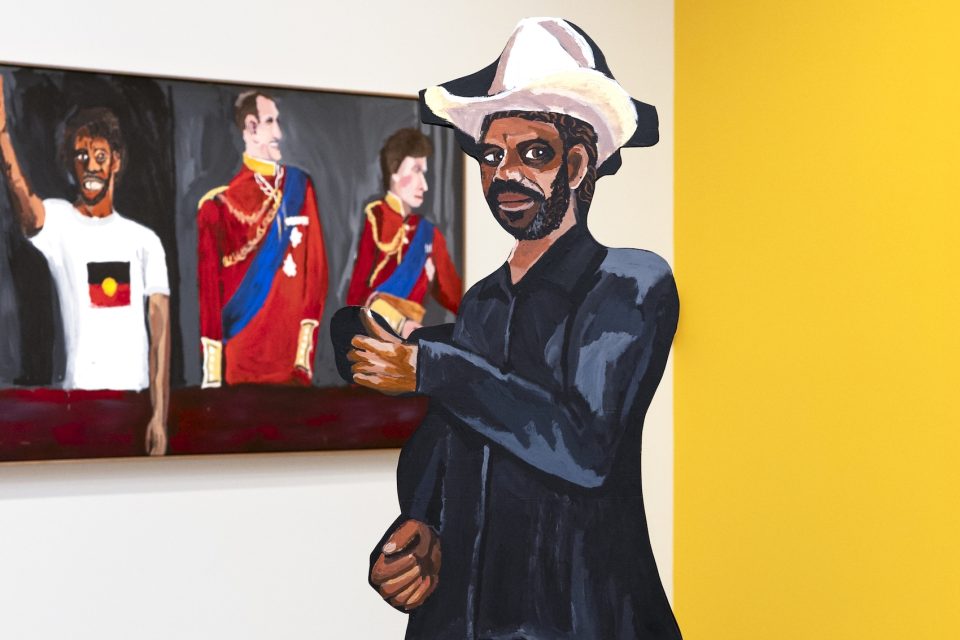
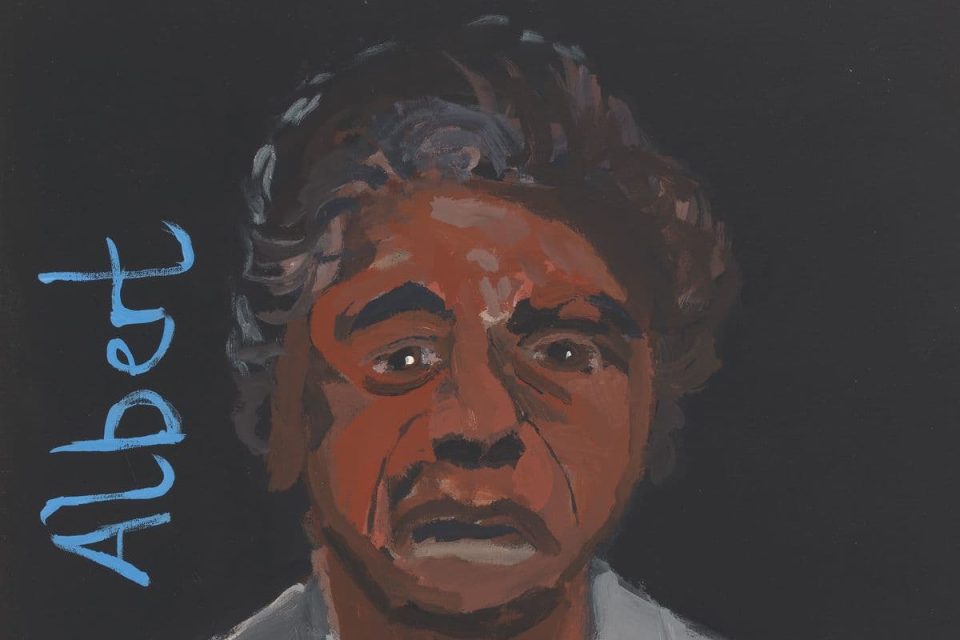
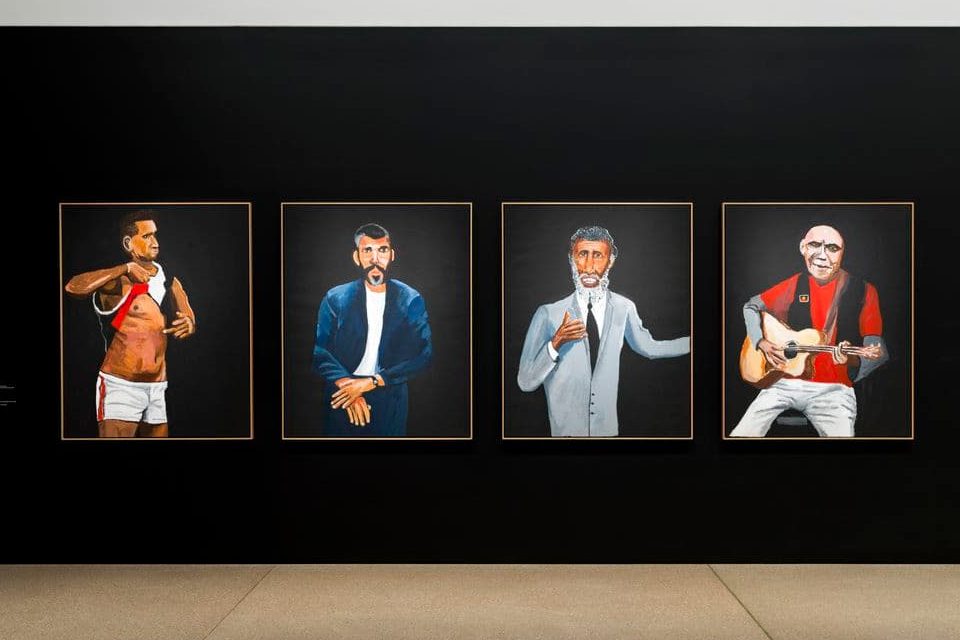
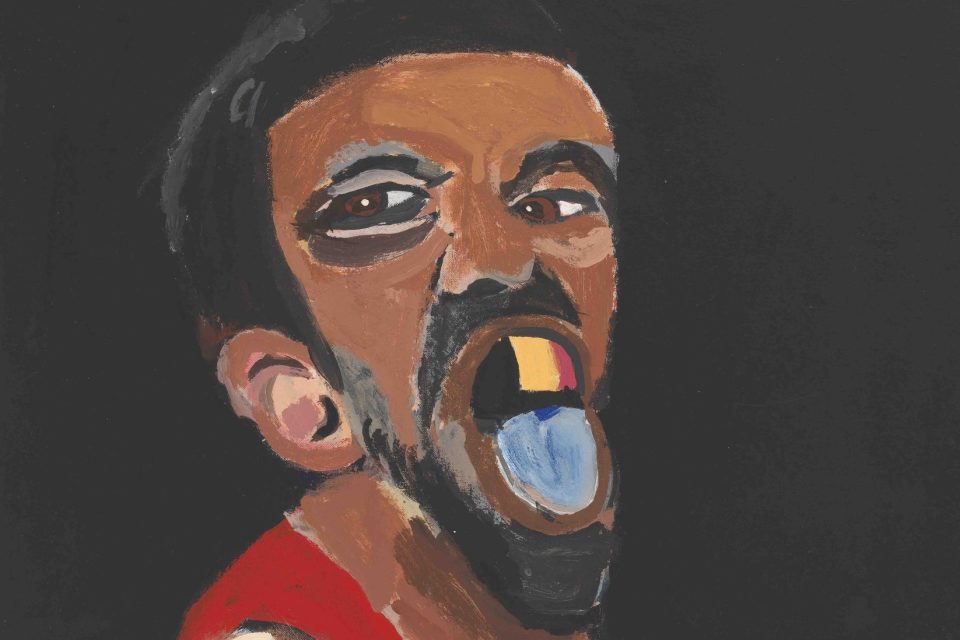
Vincent Namatjira also has a humorous narrative for most of his images, something that is revealed in the text panels that run throughout the exhibition.
For example, in reference to a portrait of himself standing next to the Queen, apparently offering her some bush tucker and set against a red outback setting, the caption reads: “In my paintings, I’m on equal footing with the royals. I’m part of their royal balcony photo shoots, I climb on top of the Queen’s carriage, I share a cuppa tea in the palace and I return the favour by offering the Queen some bush tucker – maku – (witchetty grubs) and tjala (honey ants). I’m still awaiting my invitation to visit Buckingham Palace for real, though …”
The comic situational paintings with the royals bring to mind a not-dissimilar device created by Garry Shead about three decades ago. In Shead’s case, the absurdity of the situation and the emphasis placed on the royals being so out of place in Australia brought to the fore the absurdity of having a British head of state for Australia.
Vincent Namatjira exploits the situation to stress the fact that British royalty is employed as a strategy to silence the voice and presence of First Nations people who are not foreign trespassers but belong to this country.
Vincent Namatjira employs his visual humour as a strategy to argue for a black presence and a black identity in Australian history. I find it difficult to describe it as dry humour – there is no emotional neutrality in his work.
The humour in these paintings is full-throated, bold, emotional, and frequently borders on slapstick. His portraits of Gina Rinehart and Scott Morrison can be described as vicious, with the artist having no desire to conceal his punches.
Vincent Namatjira, a Western Arrernte artist, views his paintbrush as a weapon for challenging and changing social attitudes and rewriting Australian history.
In one of his captions, he declares: “I believe in the power of art, the power of the paintbrush. I know that art can change lives – it changed mine – and I hope that art can change the world, too.”
This exhibition, mounted and toured by the Art Gallery of South Australia, sets itself the modest goal of changing the world – we should give it a chance to succeed.
Vincent Namatjira: Australia in colour is at the National Gallery of Australia until 21 July on Level 1. No admission charges.
Original Article published by Sasha Grishin on Riotact.


